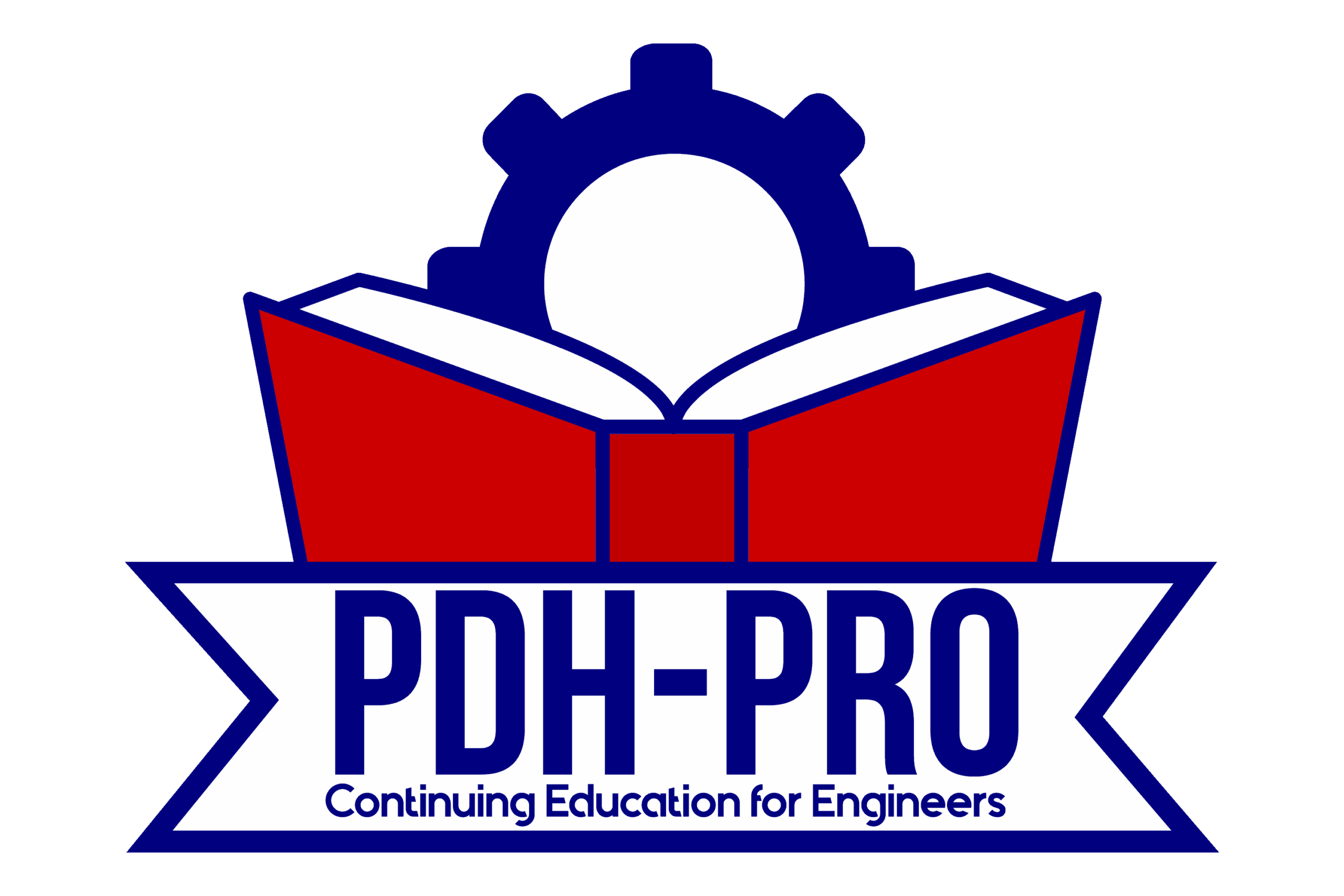Continuing Education for New York Professional Engineers
Navigating New York continuing education for engineers involves strategically earning and managing Professional Development Hours (PDHs) and Continuing Education Units (CEUs) to ensure license renewal and professional growth. By choosing NYSED approved sponsors, selecting relevant courses, and accurately tracking and documenting your PDHs and CEUs, you can seamlessly align your continuous learning with career aspirations and compliance requirements, ensuring a successful, enriching professional engineering journey in New York.
Let’s explore together, making the journey of keeping your engineering license active and your skills sharp both enjoyable and fruitful.
Introduction to Continuing Education in New York
In the buzzing world of engineering, keeping your skills sharp and updated is paramount. Not only to craft your career, but also to ensure the safety and efficiency of every project you lay your hands on.
Let’s delve into the essentials of continuing education for engineers, particularly zooming in on New York’s framework.
Importance of Continuing Education for Engineers
Engineering isn’t static. It evolves, integrating new methodologies, materials, and technologies. Thus, every professional engineer (PE) must engage in continuous learning to:
- Stay Updated: Engineering fields frequently witness advancements. Continuous education enables engineers to stay abreast of these changes.
- Uphold Safety: PEs design projects that impact public safety. Continual learning ensures they utilize the latest, safest practices.
- Enhance Career Prospects: Gaining additional knowledge and skills can lead to new opportunities and career paths.
Moreover, for engineers in New York, adhering to stipulated continuing education requirements is not merely a choice but a legal obligation to uphold their licensure.
Overview of Continuing Education Units (CEUs) and Professional Development Hours (PDHs)
Before we dive deeper, let’s get familiar with some terms:
- Continuing Education Units (CEUs): A unit used to quantify the time spent engaging in educational activities. Typically, one CEU equals ten contact hours of participation in an organized education experience.
- Professional Development Hours (PDHs): Primarily focused on engineering, one PDH is equivalent to one hour spent in a learning activity approved by the licensing board.
In New York, PEs are required to obtain 36 hours of PDHs to renew their license, ensuring they are always at the pinnacle of their expertise. The specifics might vary, considering various factors like the engineer’s years of experience and the type of license they hold.
Key Takeaways:
- PEs must engage in continuous education to ensure safety, remain updated, and enhance career opportunities.
- CEUs and PDHs are units to measure educational activities, with specific requirements for license renewal in New York.
Navigating New York’s Continuing Education Requirements
Embarking on a journey of continuous learning within the engineering sphere in New York involves adhering to specific guidelines and ensuring every learning moment is maximized, not just for compliance but for personal and professional development. Let’s dissect the New York State’s continuing education requisites and how you, as a PE, can seamlessly navigate through them.
Read our article on CEU requirements for New York professional engineers.
Understanding NY State’s CEU and PDH Requirements
In the realm of New York’s engineering, ensuring the exactness in following regulations regarding CEUs and PDHs is critical. Engineers in New York are obligated to:
- Obtain 36 PDHs every three years (for those who renew their licenses triennially).
- Participate in acceptable continuing education (CE) activities, which might encompass coursework in engineering, ethics, or business practices.
- Complete 1 hour of course credit in the area of engineering ethics.
Note: Ensure to verify the type and nature of courses or activities you engage in, as they should align with New York’s State-specific guidelines to count towards your PDHs.
Differences and Interchangeability of CEUs and PDHs
Understanding the distinction and potential equivalency between CEUs and PDHs is fundamental to effectively planning your continuing education trajectory.
- 1 CEU is equivalent to 10 PDHs.
- While CEUs tend to be more general and can be applied across various professional fields, PDHs are generally more specialized and tailored towards the engineering profession.
Key Considerations:
- Ensure that the courses taken for CEUs are relevant to your engineering practice to assure they can be converted into PDHs.
- Maintain meticulous records of your educational activities, which may be instrumental during license renewals or audits.
Complying with New York State Education Department (NYSED) Guidelines
Adhering to NYSED guidelines is pivotal in ensuring that your continued learning is recognized and validated by the state. Here’s a simplified checklist to ensure compliance:
- Select Approved Sponsors: Engage in courses or activities provided by NYSED-approved sponsors. PDH Pro is an approved NY PDH provider.
- Relevance is Key: Choose courses directly related to the practice of engineering.
- Ethical Learning: Incorporate a minimum of one PDH related to ethics in every triennial registration period.
- Lifecycle Management: Only PDHs earned in the relevant time frame (your specific triennial period) are applicable.
- Recordkeeping: Safeguard certificates of completion and other relevant documentation for a minimum of six years.
Tip: Engaging in additional learning above the required PDHs can be beneficial, as excess PDHs (up to 18) can be carried over into the subsequent registration period!
Step-by-Step Guide to License Renewal for Professional Engineers
The pathway to professional license renewal is often deemed intricate due to its multiple layers, especially for Professional Engineers in New York. But fret not! With precise steps, insightful preparation, and knowledge about common pitfalls, this can be turned into a smooth, manageable task. Let’s explore these steps together.
Preparation for License Renewal
Well-orchestrated preparation eases the license renewal process significantly. Here are some straightforward steps:
- Understand the Requirements: Acquaint yourself with the necessary PDHs and course types, ensuring alignment with NYSED standards.
- Audit Your PDHs: Regularly keep tabs on your accumulated PDHs, ensuring they align with required specifications.
- Timeline Tracking: Mark your calendar for your renewal date to allocate ample time for any additional courses needed.
- Document Organization: Consolidate all proofs of completed courses and PDHs in an organized, easily accessible manner.
Tip: Consider setting periodic reminders to review and manage your ongoing continuing education activities and records.
Submission of Renewal Applications and Required Documentation
Now, let’s delve into the actual submission process:
- Online Renewal: The New York State Education Department (NYSED) generally recommends online renewals, via their official website.
- Documentation: Attach scanned copies of all relevant documents, such as course completion certificates and PDH records.
- Fees: Ensure to pay the requisite renewal fees, typically available through various payment modes online.
- Confirmation: Upon submission, you should receive a confirmation receipt—save this for your records.
Note: Keeping a backup of all submitted documents in your personal files can safeguard against any future discrepancies or issues.
Common Mistakes to Avoid During Renewal
Efficiently navigating through renewal can be bolstered by being mindful of some common errors:
- Procrastination: Delaying PDH accumulation or renewal submission can lead to stressful last-minute scrambles or late fees.
- Inadequate Documentation: Failing to provide thorough, accurate documentation of your PDHs and courses may result in processing delays or denials.
- Non-Compliant Courses: Engaging in courses that do not comply with NYSED standards is a frequent, yet avoidable, oversight.
- Ignoring Ethics: Overlooking the mandatory ethics-related PDH could jeopardize your renewal.
Pro Insight: Joining forums or groups of PEs can provide additional insights and reminders regarding renewal, avoiding potential missteps.
Exploring Approved Continuing Education Courses
Ensuring compliance and fruitful learning through continuing education courses involves more than mere participation. The selection of NYSED approved sponsors and courses, alignment with your career trajectory, and the mode of delivery all play vital roles. Let’s explore these aspects meticulously.
Identifying NYSED Approved Sponsors
Choosing courses from NYSED approved sponsors is crucial to validate your Professional Development Hours.
PDH-Pro is a New York approved course provider. Learn more.
To simplify the selection process:
- Verify Approval: Check the sponsors’ approval status on the NYSED official website.
- Review Course Outline: Ensure the course contents align with the requirements set by NYSED.
- Seek Peer Insights: Engage in forums or groups where other PEs may recommend verified sponsors.
Pro Tip: Keeping a list of a few approved sponsors will provide alternatives and flexibility in choosing future courses.
Selecting Relevant Courses Aligned with Career Goals
Strategically selecting courses ensures that your learning is not just compliant, but also beneficial in advancing your career.
- Industry Relevance: Choose courses that are pertinent to your field of engineering.
- Skill Advancement: Opt for courses that elevate your existing skills or build new ones.
- Future Orientation: Consider courses that prepare you for emerging trends in the engineering world.
Note: Balancing courses that fulfill both your PDH requirements and enhance your skill set is optimal.
Online vs. In-Person Courses: Weighing the Options
Understanding the pros and cons of online and in-person courses helps in making informed decisions tailored to your needs.
| Aspect | Online Courses | In-Person Courses |
| Flexibility | High (learn at your own pace and schedule) | Low (fixed schedules and locations) |
| Networking | Limited opportunities | Rich possibilities for networking and direct interactions |
| Accessibility | Accessible from anywhere | Requires physical presence |
| Practical Application | May lack hands-on experiences | Opportunities for practical demonstrations and activities |
| Cost | Generally lower (no travel or accommodation expenses) | Potentially higher (possible travel, accommodation, and material costs) |
Decision-Making Tip: Evaluate your learning style, schedule, and current needs to determine which format suits you best for each course.
Conclusion: Navigating Your Continuous Professional Development Journey
Navigating through the maze of continuing education and license renewal for Professional Engineers in New York becomes more achievable with strategic planning and informed decision-making. From comprehending the nuanced requirements set by the NYSED, meticulously selecting relevant and approved courses, to astutely managing PDHs and CEUs—each step is pivotal in fortifying your career and ensuring uninterrupted practice.
Remember, aligning your continuous learning with career goals and emerging industry trends not only satisfies licensure requirements but also propels your professional trajectory forward, enhancing your skills and relevance in the dynamic field of engineering.
